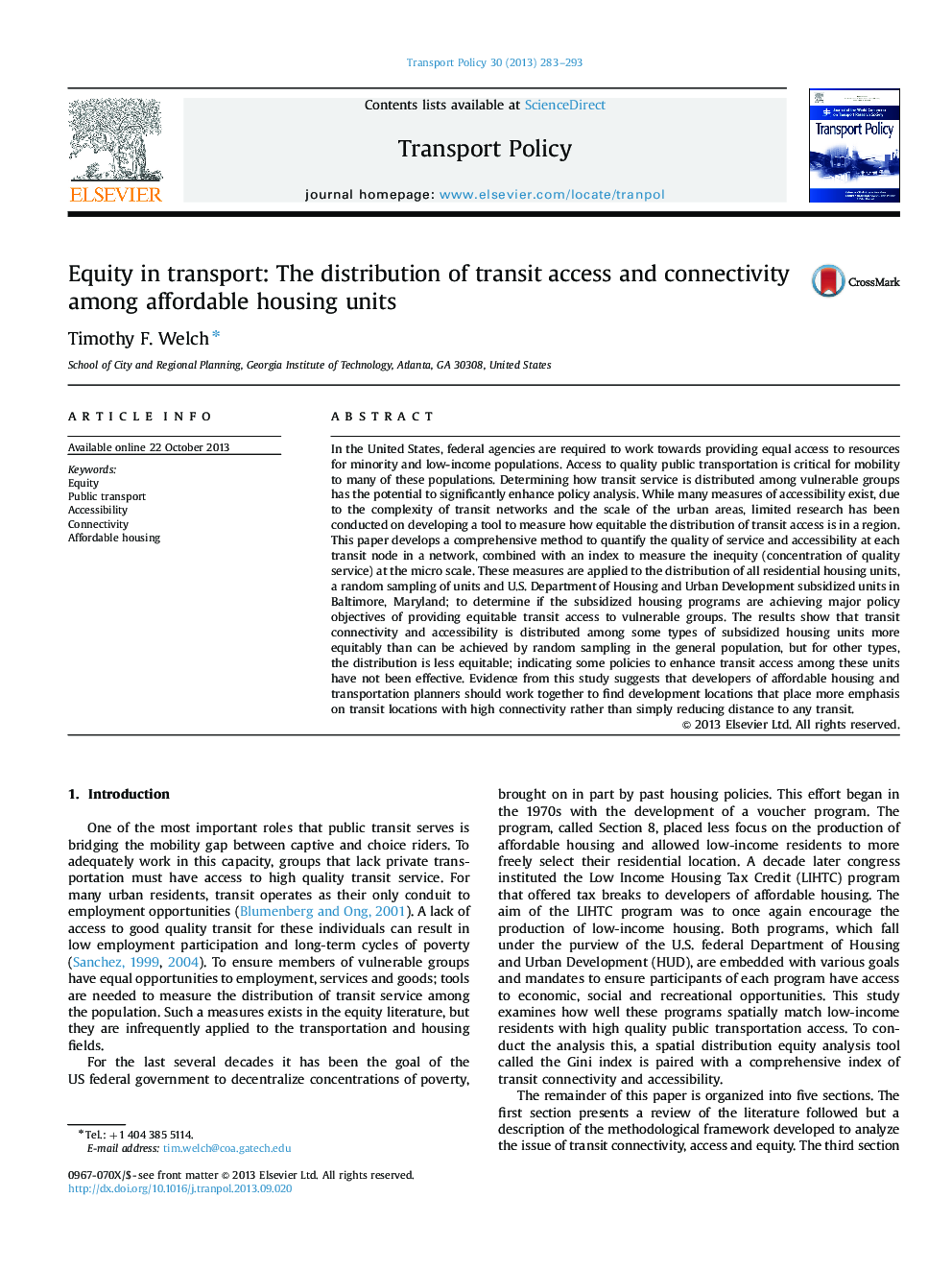| Article ID | Journal | Published Year | Pages | File Type |
|---|---|---|---|---|
| 7498188 | Transport Policy | 2013 | 11 Pages |
Abstract
In the United States, federal agencies are required to work towards providing equal access to resources for minority and low-income populations. Access to quality public transportation is critical for mobility to many of these populations. Determining how transit service is distributed among vulnerable groups has the potential to significantly enhance policy analysis. While many measures of accessibility exist, due to the complexity of transit networks and the scale of the urban areas, limited research has been conducted on developing a tool to measure how equitable the distribution of transit access is in a region. This paper develops a comprehensive method to quantify the quality of service and accessibility at each transit node in a network, combined with an index to measure the inequity (concentration of quality service) at the micro scale. These measures are applied to the distribution of all residential housing units, a random sampling of units and U.S. Department of Housing and Urban Development subsidized units in Baltimore, Maryland; to determine if the subsidized housing programs are achieving major policy objectives of providing equitable transit access to vulnerable groups. The results show that transit connectivity and accessibility is distributed among some types of subsidized housing units more equitably than can be achieved by random sampling in the general population, but for other types, the distribution is less equitable; indicating some policies to enhance transit access among these units have not been effective. Evidence from this study suggests that developers of affordable housing and transportation planners should work together to find development locations that place more emphasis on transit locations with high connectivity rather than simply reducing distance to any transit.
Related Topics
Social Sciences and Humanities
Social Sciences
Geography, Planning and Development
Authors
Timothy F. Welch,
